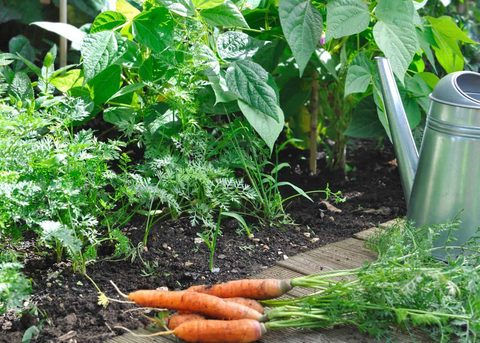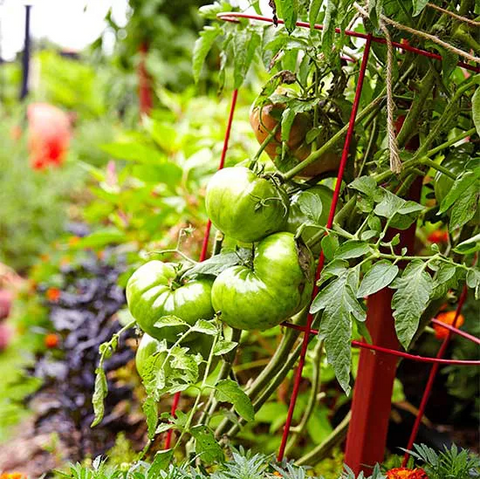As winter approaches and the temperatures drop, many gardeners face the challenge of preserving their beloved plants through the harsh winter months. Overwintering, a gardening practice that involves protecting plants from the cold and ensuring their survival until the warmer months return, is a key strategy for maintaining a vibrant and healthy garden. In this blog, we'll delve into the various overwintering strategies and explore the diverse range of plant varieties that can successfully endure the winter chill.

Understanding Overwintering
- Overwintering Basics:
Overwintering is the process of safeguarding plants from the detrimental effects of winter conditions, including freezing temperatures, frost, and snow. This practice is particularly crucial for tender plants, perennial flowers, and certain vegetables that may not withstand the harsh winter climate.
- The Importance of Planning:
Successful overwintering requires thoughtful planning. As autumn transitions to winter, gardeners need to assess the specific needs of their plants, consider the climate of their region, and implement strategies that best suit the plant varieties in their care.
- Factors Affecting Overwintering:
Several factors influence the success of overwintering, including plant hardiness, local climate conditions, and the specific requirements of different plant varieties. Understanding these factors is key to implementing effective overwintering strategies.
Overwintering Strategies
- Mulching:
Mulching is a fundamental overwintering technique that involves covering the soil around plants with a layer of organic material, such as straw, leaves, or wood chips. Mulch acts as insulation, protecting plant roots from extreme temperature fluctuations and preventing frost heaving.
- Protective Coverings:
For more delicate plants or those in pots, protective coverings offer an additional layer of defense. Frost cloths, burlap wraps, or even inverted flowerpots can shield plants from freezing temperatures, wind, and snow, creating a microclimate that helps them survive the winter.
- Winterizing Structures:
In regions with severe winters, constructing winterizing structures can be a game-changer. Cold frames, hoop houses, and greenhouses provide a controlled environment that shields plants from the harshest elements while allowing them to receive sunlight for photosynthesis.
- Watering Strategies:
Proper watering is essential for successful overwintering. Well-hydrated plants are more resilient to cold stress. However, it's crucial to strike a balance, as overwatering can lead to root rot in certain plants. Adjust the watering frequency according to the requirements of the plant and the prevailing environmental conditions.
- Windbreaks:
Wind can exacerbate the detrimental effects of cold temperatures on plants. Installing windbreaks, such as fences or temporary barriers, helps mitigate the impact of harsh winds, reducing the risk of desiccation and damage to plant tissues.
- Transplanting and Container Considerations:
For plants in containers, consider transplanting them into larger pots before winter. This provides additional insulation for the roots. Elevate containers off the ground to prevent direct contact with freezing surfaces, which can damage the roots.

Plant Varieties Suitable for Overwintering
- Hardy Perennials:
Hardy perennials are well-equipped to endure winter conditions. Examples include coneflowers (Echinacea), black-eyed Susans (Rudbeckia), and asters. These plants often benefit from a layer of mulch to protect their roots.
- Evergreen Trees and Shrubs:
Evergreens, such as pine, spruce, and juniper, naturally retain their foliage throughout the winter. While they are adapted to colder climates, some additional protection, especially for young plants, can enhance their chances of thriving.
- Cold-Tolerant Vegetables:
Certain vegetables can withstand chilly temperatures and continue to be produced during the winter. Kale, collard greens, Brussels sprouts, and certain varieties of lettuce are examples of cold-tolerant vegetables that can be grown throughout the winter with proper care.
- Bulbs and Tubers:
Spring-flowering bulbs like tulips, daffodils, and crocuses are well-suited for overwintering. Plant them in the fall, and they will lie dormant during the winter months, emerging with vibrant blooms in the spring.
- Herbs with Winter Resilience:
Some herbs exhibit resilience in the face of winter conditions. Rosemary, thyme, and sage are examples of herbs that, with proper protection, can continue to thrive in colder temperatures.
- Winter-Flowering Plants:
Selecting plants that bloom during the winter months can bring color and vibrancy to your garden even in the coldest season. Winter-blooming camellias, hellebores, and witch hazel are excellent choices for adding visual interest to the winter landscape.

Tips for Successful Overwintering
- Monitor Weather Conditions:
Stay informed about local weather forecasts and anticipate temperature drops or frost events. Being proactive allows you to implement protective measures before adverse conditions occur.
- Gradual Transitioning:
Gradually acclimate plants to colder temperatures by reducing watering and adjusting their exposure to outdoor conditions. This helps them develop cold resistance and adapt to the changing climate.
- Healthy Plants Overwinter Better:
Strong, healthy plants are better equipped to withstand winter stress. Ensure your plants receive adequate nutrients, sunlight, and water leading up to the winter months.
- Avoid Fertilizing Late in the Season:
Cease fertilization in the late fall to discourage new growth, which can be vulnerable to winter damage. Allow plants to enter a state of dormancy naturally.
- Protecting Newly Planted Perennials:
Newly planted perennials may require extra protection during their first winter. Mulch around their base and consider providing a windbreak to safeguard them as they establish their root systems.
- Regular Inspections:
Throughout the winter, periodically inspect your plants for signs of stress, disease, or pest infestations. Early detection allows for prompt intervention and prevents issues from escalating.
- Adjusting Watering Practices:
In cold climates, reduce watering frequency in the weeks leading up to winter. However, it's essential to ensure that plants do not enter the winter season in a state of drought stress.
Conclusion
Overwintering is a thoughtful and strategic approach to maintaining a thriving garden, even in the face of winter's challenges. By understanding the specific needs of different plant varieties and implementing effective overwintering strategies, gardeners can ensure the health and vitality of their plants through the colder months. From hardy perennials and evergreens to cold-tolerant vegetables and winter-flowering blooms, a diverse array of plants can successfully navigate the winter landscape with proper care. As you prepare your garden for winter, remember that each step you take contributes to the resilience and beauty of your outdoor space. Embrace the changing seasons, and let your garden emerge from winter's embrace ready to flourish in the warmth of spring.









